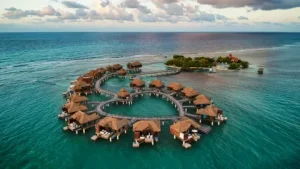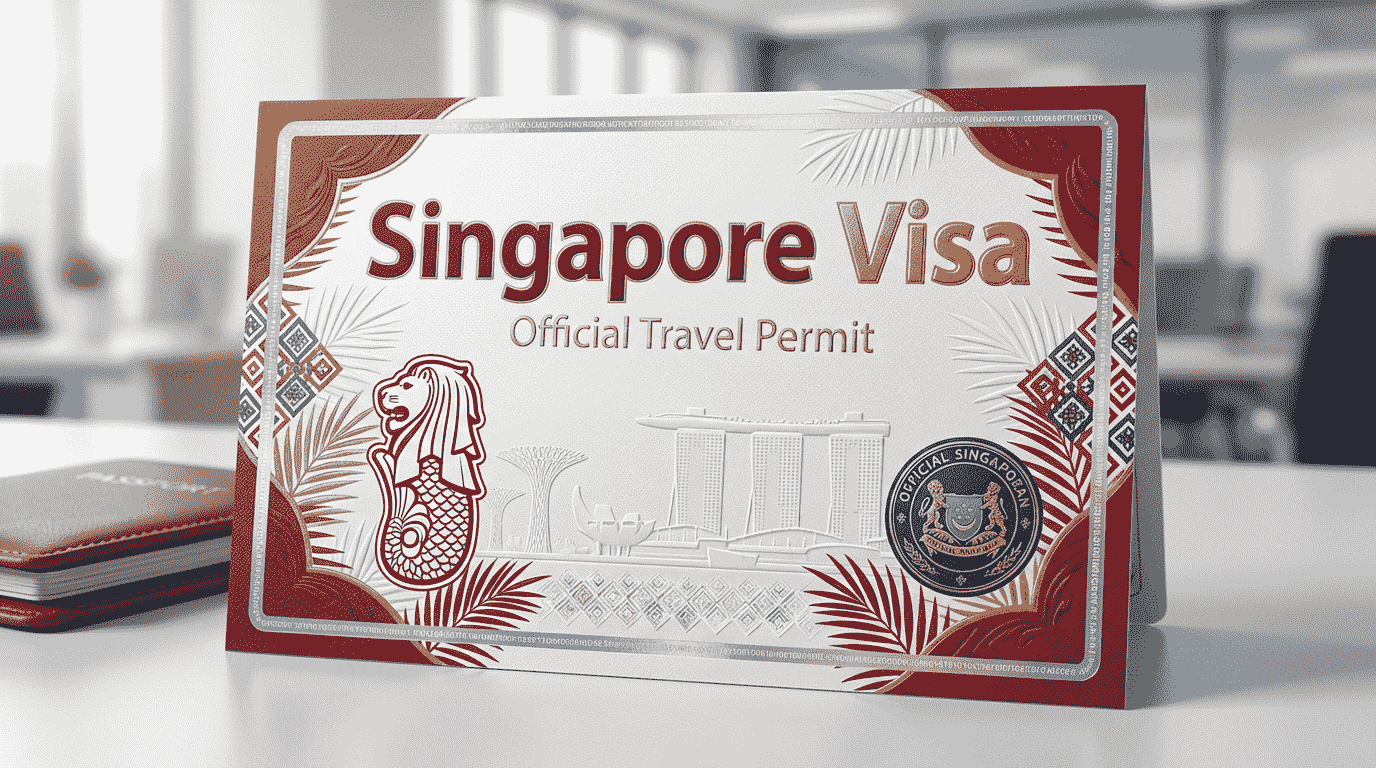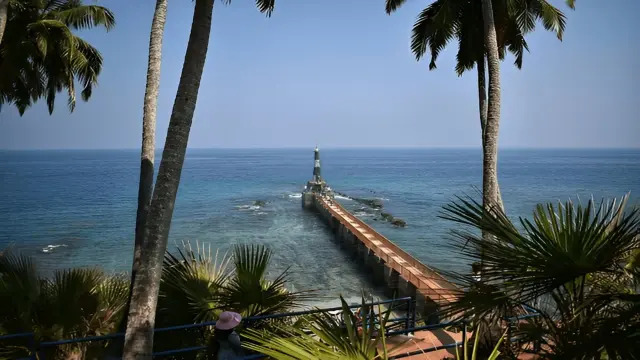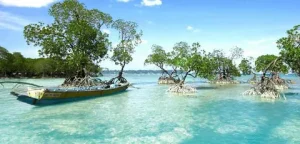Travel & Hospitality
The Role of Chatbots in Modern Travel

Introduction
The travel industry is inherently complex, involving numerous variables such as flight bookings, hotel reservations, itinerary planning, and customer service. Traditionally, these tasks required significant human intervention, resulting in inefficiencies and increased costs. However, the advent of chatbots has streamlined these processes, offering a seamless and personalized experience for travelers.
Understanding Chatbots
Chatbots are AI-powered software applications designed to simulate human conversation. They can interact with users via text or voice, providing instant responses to queries. Leveraging natural language processing (NLP) and machine learning (ML), chatbots can understand and respond to a wide range of questions, making them invaluable in customer service and support.
The Role of Chatbots in Travel

Image by: Yandex.com
-
Simplifying Travel Planning
One of the primary roles of chatbots in travel is simplifying the planning process. Travelers can interact with chatbots to search for flights, hotels, and activities. By inputting specific criteria such as dates, destinations, and budget, users receive tailored recommendations. This not only saves time but also enhances the overall planning experience.
-
Streamlining Bookings
Booking flights and accommodations can be a daunting task, especially when dealing with multiple providers. Chatbots streamline this process by integrating with various booking platforms. Users can complete their reservations directly through the chatbot interface, eliminating the need to navigate multiple websites.
-
Enhancing Customer Service
Customer service is a critical aspect of the travel industry. Chatbots provide 24/7 support, addressing common queries such as flight status, baggage policies, and check-in procedures. This immediate assistance reduces the workload on human agents and ensures travelers receive timely information.
-
Personalizing Travel Experiences
Modern travelers seek personalized experiences, and chatbots excel in this area. By analyzing user data and preferences, chatbots can offer customized recommendations for activities, dining, and sightseeing. This level of personalization enhances the travel experience, making it more enjoyable and memorable.
-
Managing Travel Disruptions
Travel disruptions such as flight delays or cancellations are inevitable. Chatbots play a crucial role in managing these situations by providing real-time updates and alternative solutions. For instance, if a flight is canceled, the chatbot can suggest alternative flights or rebooking options, minimizing inconvenience for travelers.
-
Facilitating Language Translation
Language barriers can pose significant challenges for international travelers. Chatbots equipped with translation capabilities can bridge this gap, allowing users to communicate in their preferred language. This feature is particularly useful for navigating foreign destinations and interacting with local services.
-
Collecting and Analyzing Data
Chatbots generate a wealth of data through user interactions. This data can be analyzed to gain insights into traveler preferences, behavior, and trends. Travel companies can leverage this information to refine their services, improve customer satisfaction, and develop targeted marketing strategies.
Case Studies: Chatbots in Action

Image by: Yandex.com
-
KLM Royal Dutch Airlines
KLM has integrated a chatbot named “BB” (Blue Bot) into its customer service operations. BB assists travelers with booking flights, providing flight status updates, and answering frequently asked questions. The chatbot’s ability to handle multiple queries simultaneously has significantly enhanced KLM’s customer service efficiency.
-
Expedia
Expedia’s chatbot, available on Facebook Messenger, helps users find and book hotels, flights, and vacation packages. By leveraging NLP, the chatbot understands user queries and provides relevant recommendations. This has streamlined the booking process and improved user engagement.
3. Marriott International
Marriott’s chatbot, “Chatbot,” is designed to assist guests during their stay. Guests can use Chatbot to request services such as room service, housekeeping, and concierge assistance. The chatbot’s integration with Marriott’s property management system ensures prompt and efficient service delivery.
Future Trends and Potential

Image by: Yandex.com
The role of chatbots in modern travel is continually evolving, driven by advancements in AI and machine learning. Several trends and potential developments are worth noting:
-
Voice-Activated Chatbots
Voice-activated chatbots, powered by virtual assistants like Amazon Alexa and Google Assistant, are gaining traction. These chatbots offer hands-free interaction, making them ideal for on-the-go travelers.
-
Integration with IoT Devices
The integration of chatbots with Internet of Things (IoT) devices is set to revolutionize the travel experience. For example, chatbots can interact with smart hotel rooms to control lighting, temperature, and entertainment systems, providing a personalized and convenient stay.
-
Advanced Personalization
Future chatbots will leverage advanced AI algorithms to offer even more personalized recommendations. By analyzing a broader range of data points, including social media activity and past travel history, chatbots can deliver hyper-personalized experiences.
-
Enhanced Security and Privacy
As chatbots handle sensitive information such as payment details and personal data, ensuring security and privacy is paramount. Advances in encryption and authentication technologies will enhance the security of chatbot interactions, building trust among users.
Conclusion
The role of chatbots in modern travel is undeniably transformative. From simplifying travel planning and streamlining bookings to enhancing customer service and personalizing experiences, chatbots have become indispensable tools for travelers and travel companies alike. As technology continues to advance, the potential for chatbots in the travel industry is boundless, promising even greater efficiencies and enhanced experiences for travelers worldwide.
In conclusion, embracing chatbots is not just a trend but a necessity for the modern travel industry. By leveraging the power of AI and machine learning, chatbots are set to redefine the way we travel, making it more convenient, personalized, and enjoyable.
Entertainment
Hidden Island Resorts for Extraordinary Travel Experiences

isWhen thinking of an island to visit, most travelers immediately envision the usual tropical paradises like the Maldives, Bali, or Hawaii. However, beyond these well-trodden destinations lies a world of hidden island resorts offering experiences so unique and immersive that they redefine what it means to unwind in paradise.
From private overwater villas to underwater dining, these islands blend natural beauty with extraordinary adventures, creating memories that last a lifetime. Let’s explore some of the most remarkable island resorts and the top experiences they offer, experiences you never knew existed.

1. Fregate Island, Seychelles – A Private Eco-Luxury Haven
Nestled in the heart of the Seychelles, Fregate Island is a private luxury resort that feels like stepping into a real-life Robinson Crusoe novel. This exclusive island is home to only 16 private villas, ensuring ultimate privacy and personalized service.
Top Experiences:
-
Giant Aldabra Tortoise Encounters: Meet the island’s gentle, centuries-old tortoises in their natural habitat.
-
Guided Nature Walks: Explore lush tropical forests and discover rare flora, including endemic palms and vanilla orchids.
-
Sunset Cruises: Sail along pristine waters while sipping champagne, with the chance to spot dolphins or even a passing whale.
Fregate Island isn’t just about luxury; it’s about immersing yourself in a fragile ecosystem while enjoying unparalleled seclusion.
2. Soneva Jani, Maldives – A Unique Overwater Paradise
The Maldives is famed for overwater bungalows, but Soneva Jani takes it a step further with villas that feature retractable roofs for stargazing. This resort blends sustainability with cutting-edge design, creating a futuristic yet intimate island escape.
Top Experiences:
-
Private Stargazing: Lie under the stars from your villa’s living room with a telescope guided by an expert astronomer.
-
Submarine Exploration: Explore the vibrant coral reefs without getting wet via an underwater viewing pod.
-
Cinema Under the Stars: Enjoy private film screenings on the beach or on your deck under the night sky.
Soneva Jani proves that even in a well-known destination, there’s room for experiences that feel entirely novel.
3. North Island, Seychelles – The Ultimate in Privacy
While Seychelles itself is renowned for its natural beauty, North Island takes seclusion to an entirely new level. This eco-luxury resort is known for its pristine beaches and uncompromising privacy.
Top Experiences:
-
Tailor-Made Adventures: The resort offers experiences based on your interests, from snorkeling with turtles to guided hikes through untouched forests.
-
Island Conservation Programs: Participate in conservation efforts, such as planting corals or helping protect endangered species.
-
Luxury Spa Treatments in Nature: Indulge in spa sessions held in treetop pavilions overlooking the ocean.
The North Island is ideal for travelers seeking not only luxury but also a connection with nature that is rarely found elsewhere.
4. Tikehau Pearl Beach Resort, French Polynesia – A Hidden Gem
Tikehau, part of the Tuamotu Archipelago in French Polynesia, is an atoll that often escapes the radar of mainstream tourism. The Pearl Beach Resort offers the perfect mix of simplicity and elegance, with thatched-roof bungalows surrounded by turquoise waters.
Top Experiences:
-
Pink Sand Beaches: Walk along rare pink sand beaches, created by crushed coral and shells.
-
Lagoon Excursions: Swim with manta rays and explore lagoons teeming with tropical fish.
-
Local Cultural Experiences: Learn traditional Polynesian crafts and enjoy intimate island feasts.
This resort showcases the magic of understated luxury combined with authentic cultural immersion.
5. Song Saa Private Island, Cambodia – Jungle Meets Ocean
Hidden in the Cambodian Koh Rong Archipelago, Song Saa Private Island is a boutique resort that fuses lush jungle with pristine beaches. The resort places sustainability and ecological responsibility at its core, making it a perfect choice for conscious travelers.
Top Experiences:
-
Underwater Meditation: Participate in guided meditation sessions in a shallow, clear-water platform.
-
Eco-Tours: Kayak through mangrove forests and learn about local marine ecosystems.
-
Sunset Cruises with Champagne: Glide along the sparkling waters with breathtaking views of the horizon.
Song Saa is a testament to how luxury can harmoniously coexist with environmental mindfulness.
6. Necker Island, British Virgin Islands – Celebrity Island Resort
Owned by Sir Richard Branson, Necker Island is synonymous with ultimate exclusivity. The entire island can be rented for private parties, family vacations, or romantic getaways.
Top Experiences:
-
Helicopter Rides: Get a bird’s-eye view of the Virgin Islands and neighboring islands in style.
-
Water Sports Galore: From kite surfing to paddleboarding, the island offers activities for adrenaline seekers.
-
Private Dining Experiences: Gourmet meals prepared by world-class chefs in secluded spots across the island.
Necker Island is perfect for those who seek both adventure and the kind of privacy that makes you feel like the world exists solely for you.
7. Matamanoa Island, Fiji – Boutique Island Paradise
Top Experiences:
-
Traditional Fijian Ceremonies: Participate in a kava ceremony or learn the art of Fijian dance.
-
Snorkeling and Diving Adventures: Explore coral gardens teeming with vibrant marine life.
-
Sunset Yoga: Join guided yoga sessions on the beach while the sun sets over the horizon.
Matamanoa is an ideal destination for travelers looking for authentic cultural experiences without sacrificing comfort. For those who love pristine shores, Blue Mountain Beach offers a serene escape with powdery sands and crystal-clear waters, perfect for relaxing, swimming, or simply soaking in the sun.
8. Laucala Island, Fiji – Opulence on a Secluded Paradise
Laucala Island, a private island in northern Fiji, is a playground for the ultra-wealthy, yet its beauty and experiences are accessible to anyone willing to splurge. The resort spans 12 square miles of tropical paradise, including volcanic mountains, rainforests, and pristine beaches.
Top Experiences:
-
Helicopter Island Tours: Explore hidden valleys, waterfalls, and beaches from above.
-
Equestrian Adventures: Ride horses along secluded beaches or through the jungle.
-
Culinary Experiences: Indulge in meals prepared from the island’s organic farm, paired with exquisite wines.
Laucala combines adventure, privacy, and over-the-top luxury, making every moment feel extraordinary.
9. Zaya Nurai Island, UAE – Desert Meets Ocean
For those who never thought of island resorts in the Middle East, Zaya Nurai Island near Abu Dhabi is a revelation. The private island offers pristine white sand beaches and turquoise waters just off the UAE coast.
Top Experiences:
-
Luxury Yacht Cruises: Explore the surrounding waters and nearby islands in style.
-
Desert and Island Fusion Experiences: Combine dune bashing in the desert with beachside relaxation.
-
Wellness Retreats: Holistic spa treatments and yoga sessions tailored to rejuvenate body and mind.
Zaya Nurai showcases a fusion of Arabian opulence and tropical serenity that few travelers anticipate.
10. Cempedak Private Island, Indonesia – Jungle and Sea Adventure
Located in Indonesia’s Riau Archipelago, Cempedak Private Island is an untouched sanctuary that merges rainforest adventures with oceanic tranquility.
Top Experiences:
-
Forest Walks with Local Guides: Discover hidden waterfalls and learn about native wildlife.
-
Snorkeling and Diving in Coral Reefs: Explore reefs that are rich in marine biodiversity.
-
Culinary Journeys: Enjoy meals featuring fresh, locally sourced seafood prepared by expert chefs.
Cempedak offers a rare combination of wild exploration and indulgent relaxation, perfect for adventurous travelers seeking solitude.
Why Choose These Hidden Island Resorts?
These island resorts are not just luxurious accommodations; they are gateways to experiences that touch every sense. From private beaches and starlit dinners to jungle treks and underwater adventures, these destinations redefine what it means to escape. Unlike mainstream resorts, each of these islands offers:
-
Privacy and exclusivity: Small-scale resorts ensure personalized attention.
-
Unique experiences: From underwater meditation to riding horses on private beaches, the adventures are often one-of-a-kind.
-
Connection with nature: Many resorts incorporate sustainable practices and conservation programs, allowing guests to give back to the ecosystems they enjoy.
-
Cultural immersion: Engage with local traditions, cuisine, and communities in meaningful ways.
Traveling to these hidden gems provides more than relaxation; it offers inspiration, discovery, and memories that last a lifetime.
Final Thoughts
If your next vacation seeks more than the ordinary, consider stepping off the beaten path to one of these extraordinary island resorts. They promise luxurious accommodations, breathtaking scenery, and unforgettable experiences that go far beyond the typical sun-and-sand escape. Whether it’s the private eco-luxury of Fregate Island, the starlit magic of Soneva Jani, or the cultural charm of Matamanoa, each destination offers a slice of paradise uniquely its own.
These are the islands you didn’t know existed, waiting for travelers ready to embrace adventure, serenity, and extraordinary experiences. The question is not whether to visit, but which hidden paradise will be your next escape.
Lifestyle
Latest Singapore Visa Pathways for Pakistani Travelers in 2025

Latest Singapore Visa Pathways for Pakistani Travelers in 2025
The Singapore Visa system for Pakistani travelers in 2025 has evolved into a more structured, streamlined, and digitally oriented framework.
Singapore’s immigration authorities continue to refine policies for tourists, workers, families, entrepreneurs, and students from Pakistan, aiming to balance strict border security with a smooth, predictable visa application process.
With Singapore recognized as one of Asia’s most secure, stable, and technologically advanced economies, Pakistani travelers are increasingly seeking short-term and long-term opportunities across education, employment, business, and tourism.
The new updates for 2025 offer clearer pathways, refined eligibility standards, and improved digital tools that simplify the application experience.

Growing Demand for Singapore as a Destination
The number of Pakistani travelers heading to Singapore has steadily risen due to the country’s high living standards, job opportunities, modern education system, and thriving tourism industry.
Changi Airport continues to rank as one of the world’s best, and Singapore’s transit-friendly location between South Asia and East Asia makes it an ideal gateway for global travel.
As more Pakistanis choose Singapore for work, studies, tourism, or family relocation, understanding the updated visa pathways in 2025 has become essential for smooth and successful travel planning.
Updated Visa Pathways for 2025
Singapore’s visa system is divided into clear categories depending on purpose and duration of stay. The 2025 framework highlights six major pathways for Pakistani citizens.
1. Tourist Visa / Short-Term Visit Pass (STVP)
The Short-Term Visit Pass remains the most common visa pathway for Pakistani travelers visiting Singapore for tourism, family visits, short trainings, or business meetings. Although Pakistanis require a visa beforehand, the process is efficient through authorized visa agents.
Key Features
• Valid for 30 days (extendable in certain cases).
• Issued as an e-Visa.
• Requires confirmed accommodation, financial proof, and travel history.
What’s New in 2025
The immigration authorities have implemented enhanced document verification to reduce fraud, making accurate information more important than ever. E-verification of hotel bookings and bank statements has also become more common.
2. Singapore Work Passes for Pakistani Professionals
Singapore continues to attract skilled Pakistani workers in IT, finance, healthcare, hospitality, engineering, and construction. In 2025, the three-tier work pass system remains the backbone of Singapore’s foreign employment structure.
a. Work Permit (WP)
Designed for lower- and mid-skilled workers.
• Requires employer sponsorship.
• Subject to sector quotas and levies.
• Common in construction, shipyards, and manufacturing.
2025 updates emphasize stricter employer compliance, stronger worker protection, and digital verification of job placements.
b. S Pass
Ideal for diploma holders and mid-level technicians.
• Salary and qualification requirements reviewed annually.
• Applicants undergo COMPASS scoring (a points-based system).
In 2025, COMPASS gives more weight to industry relevance and prior work experience, benefiting Pakistani applicants with strong technical backgrounds.
c. Employment Pass (EP)
Designed for highly skilled professionals.
• Higher salary requirements.
• Requires recognized qualifications.
• Offers flexibility for managerial and specialist roles.
The 2025 COMPASS updates have integrated industry demand indicators, giving priority to sectors where Singapore faces talent shortages—often a good opportunity for Pakistani IT, engineering, and medical professionals.
3. Student Pass for Pakistani Students
Singapore’s education sector continues to grow globally, attracting Pakistani students to programs in engineering, computing, medicine, and business.
Requirements
• Letter of Acceptance from an ICA-listed institution.
• Academic transcripts.
• Financial evidence covering tuition and living expenses.
• Registration on the SOLAR+ student system.
Updates in 2025
Faster processing for students enrolling in STEM programs and improved clarity on part-time work rules during studies. Universities now directly upload verification documents to ICA, reducing errors and delays.
4. Entrepreneur and Investor Visa Routes
Singapore remains a global hub for innovation and startups. Pakistani entrepreneurs continue to explore long-term business and residency opportunities.
a. Entre Pass
For entrepreneurs planning to start and operate innovative businesses in Singapore.
• Requires a solid business plan.
• Must meet innovation and funding criteria.
• Ideal for tech founders, innovators, and scalable startups.
b. Tech-Pass
Launched to attract world-class tech talent, this pass allows:
• Starting multiple tech companies.
• Working for multiple tech employers.
• Mentor or invest in local startups.
2025 Updates
The criteria now recognize contributions from emerging tech fields such as AI tools, cybersecurity, robotics, and digital banking—areas where skilled Pakistanis with global portfolios can benefit.
5. Long-Term Visit Pass (LTVP)
For Pakistani citizens staying longer due to family ties, employment-linked support, or caregiving roles.
Who Can Apply
• Family of Singapore residents or PR holders.
• Parents of international students.
• Spouses of foreign employees.
The 2025 digital updates now allow applicants to track processing stages online and upload additional documents directly.
6. Dependent’s Pass
• Requires proof of relationship and financial support.
In 2025, dependent eligibility has been expanded for certain professional categories, especially in tech and healthcare.
Step-by-Step Application Overview for 2025
Although each visa category has unique requirements, Pakistanis applying for a Singapore visa typically follow this structure:
Step 1: Determine the visa type
Choose the correct category based on travel purpose.
Step 2: Prepare required documents
Typically includes passport, photographs, bank statements, sponsorship letters, travel itinerary, and employer/student documents.
Step 3: Submit through an authorized agent
Singapore does not allow direct online visa applications from Pakistan. Licensed agents handle the submission.
Step 4: Track the application
Processing usually ranges from 3–10 days depending on the visa type.
Step 5: Receive e-Visa
The approved visa is issued electronically and printed before travel.
Common Reasons for Visa Rejection in 2025
Despite streamlined systems, rejections still occur due to avoidable mistakes.
Frequent Causes
• Insufficient financial proof.
• Incorrect or unverifiable documents.
• Mismatch between travel purpose and documents.
• Weak travel history.
• Unclear employment or study details.
• Suspicious or incomplete sponsorship records.
Pakistani applicants in 2025 are strongly advised to provide transparent, accurate information to avoid delays.
Key Documents Needed in 2025
While each visa has its own checklist, general documents include:
• Passport valid for at least 6 months.
• Recent passport-size photos.
• Fully completed Singapore visa form.
• CNIC copy.
• Bank statements (6 months preferred).
• Travel itinerary or hotel confirmation.
• Invitation letter (if applicable).
• Sponsorship documents (if required).
Workers, students, and entrepreneurs require additional employment, financial, or educational documents.
Financial Requirements for Pakistani Applicants
Singapore does not publish fixed financial amounts, but applicant funds must clearly cover:
• Air tickets.
• Hotel stay.
• Daily living costs.
• Emergency expenses.
Agents often recommend maintaining a healthy bank balance with consistent activity rather than sudden large deposits.
Final Thoughts
The Singapore Visa pathways in 2025 provide Pakistani travelers with clear and structured opportunities—whether you’re exploring tourism, studying, building a career, relocating family, or launching a business.
Digital systems, improved verification, and updated work pass rules make the process more predictable, but accuracy, financial clarity, and strong documentation remain essential.
For professional guidance, application support, and smooth processing, Worldwide Visa Service stands ready to assist Pakistani applicants at every stage of their Singapore journey.
Lifestyle
Andaman Tour Packages: Top Water Sports Adventures Await

The most trending water sports included in Andaman Tour Packages are scuba diving, snorkeling, parasailing, sea walking, jet skiing, banana boat rides, kayaking, and glass-bottom boating, along with unique additions like night kayaking, semi-submarine rides, and coral safaris.
Whether you choose an Andaman Nicobar package, an Andaman and Nicobar package, or general Andaman packages, these activities offer the perfect mix of thrill, fun, and underwater exploration for families, couples, and adventure lovers.

Why Water Sports Are a Major Highlight of Andaman?
The Andaman Islands boast some of the clearest waters in Asia, world-class coral reefs, and calm coastlines—making them the ultimate playground for water sports.
From beginner-friendly adventures to high-energy experiences, the islands cater to every traveler’s excitement level. Water sports are included in many package variants, and even if not, they are easily accessible across Port Blair, Havelock, Neil Island, and North Bay.
The mix of affordability, safety, and variety is why travelers from India and abroad book Andaman Tour Packages exclusively for water adventures.
Top Trending Water Sports in Andaman Packages:
1. Scuba Diving – Andaman’s Most Iconic Water Sport-
Scuba diving sits at the top of the list thanks to the islands’ exceptional underwater visibility and rich marine biodiversity. Whether you’re a first-timer or a certified diver, you’ll witness vibrant corals, colorful schools of fish, and dramatic underwater landscapes.
Why it’s trending:
- Clear water visibility
- Beginner-friendly dive spots
- Professional, certified instructors
- Video and photography add-ons
Popular diving locations: Havelock (Swaraj Dweep), Neil Island, North Bay Island.
2. Snorkeling – Easy, Fun, and Budget-Friendly-
Snorkeling is one of the most accessible activities included in many Andaman Tour Packages. You just put on a mask, tube, and fins—and you’re ready to explore the underwater world.
Best snorkeling spots:
- Elephant Beach
- North Bay
- Jolly Buoy Island
- Bharatpur Beach (Neil Island)
Why it’s a favorite:
- Perfect for non-swimmers
- Budget-friendly
- Great coral views without a dive session
3. Parasailing – High Thrill with a Stunning View-
For an adrenaline-filled moment with stunning aerial views of the island, parasailing is a must-try activity.
Highlights:
- A thrilling blend of sky and sea adventure
- Optional water dips
- Popular at Corbyn’s Cove and Elephant Beach
Parasailing makes your Andaman Nicobar package especially exciting if you’re chasing breathtaking visuals and a burst of adrenaline.
4. Sea Walking – A Unique Underwater Experience-
Sea walking allows you to literally walk on the ocean floor with a special oxygen helmet. It’s perfect for travelers who want a close-up look at marine life without learning how to dive.
Why sea walking stands out:
- Suitable for non-swimmers
- No heavy gear
- Relaxed, safe underwater experience
Best locations: North Bay Island & Elephant Beach.
Adventure-Filled Water Sports for Thrill Seekers:
1. Jet Skiing
Jet skiing is fast, fun, and perfect for adventure lovers. Professional guides are always available, making the experience safe even for first-timers.
Popular Jet Ski Spots:
- Port Blair
- Havelock Island
- Neil Island
2. Kayaking – With a Chance to See Bioluminescence
Kayaking is both peaceful and exhilarating. You can paddle through calm waters, mangrove creeks, or even experience the magical bioluminescence during night kayaking in Havelock.
Why travelers love it:
- Serene atmosphere
- Perfect for nature lovers
- Night kayaking is a rare experience
3. Speed Boating
If you want something thrilling but short, speed boating offers a fun, fast-paced ride across blue waters. It’s especially popular among groups looking for quick adventure.
Fun Group & Family-Friendly Water Activities:
1. Banana Boat Rides
A banana boat ride guarantees laughter, splashes, and unforgettable memories. Families and groups of friends enjoy this activity for its excitement and affordability.
Best locations:
- Corbyn’s Cove
- Havelock
- Neil Island
2. Glass-Bottom Boating
Perfect for seniors, kids, and non-swimmers, glass-bottom boats give you a clear view of beautiful corals without entering the water.
Ideal for:
- Families with children
- Senior tourists
- Visitors who want a relaxed experience
3. Coral Safari Semi-Submarine
This semi-submarine ride places you right next to the corals without diving or snorkeling. Large glass panels give a panoramic underwater view, making it a top pick for families.
Why it’s trending:
- Perfect for all age groups
- Zero water contact
- Great for photography
What Makes Andaman the Best Water Sports Destination?
- Calm, crystal-clear waters ideal for underwater activities
- Safe and regulated adventure zones
- Rich marine life rarely seen in mainland India
- World-class instructors available at major beaches
- Activities for all ages—from kids to seniors
When booking Andaman and Nicobar package options, many travelers prioritize water sports because the islands offer some of the best marine experiences in India.
How to Choose the Right Andaman Package for Water Sports?
To get the best value, look for Andaman packages that include:
-
1–2 major water sports (scuba diving, snorkeling, or sea walking)
-
Transfers to popular water sports beaches
-
Safety gear
-
Certified instructors
-
Photography or GoPro options
If you choose a land-only package, you can still book activities on the spot at Havelock, Port Blair, or Neil Island.
Tips for Enjoying Water Sports in Andaman:
-
Book activities early during peak season (Oct–Mar).
-
Choose early morning slots for clearer water and better visibility.
-
Follow instructors’ guidelines strictly.
-
Carry quick-dry clothing and waterproof bags.
-
Avoid water sports during rough seas or monsoons (Jun–Sep).
Conclusion:
From scuba diving to parasailing, night kayaking to sea walking, the Andaman Islands offer some of India’s most exciting water adventures.
Whether you’re traveling solo, as a couple, or with family, Andaman Tour Packages provide a blend of thrill, natural beauty, and unforgettable marine experiences.
With so many trending water sports included, an Andaman Nicobar package ensures your trip is packed with excitement—both above and beneath the waves.
FAQs:
1. Which water sports are most popular in Andaman Tour Packages?
The most popular activities included in Andaman Tour Packages are scuba diving, snorkeling, parasailing, sea walking, jet skiing, banana boat rides, and kayaking. Many Andaman packages also feature glass-bottom boat rides and semi-submarine experiences for non-swimmers.
2. Are water sports safe in the Andaman and Nicobar Islands?
Yes. All water sports under any Andaman Nicobar package follow strict safety protocols, trained instructors guide every session, and safety gear is mandatory. Popular spots like Havelock, Neil Island, and Port Blair offer certified operators.
3. Do Andaman packages include scuba diving in the cost?
Some Andaman and Nicobar package options include scuba diving in the main itinerary, while others offer it as an add-on. Inclusion depends on the package type, duration, and budget.
4. Can non-swimmers enjoy water sports in Andaman?
Absolutely. Non-swimmers can enjoy sea walking, glass-bottom boating, semi-submarine rides, and even snorkeling (with life jackets). Most adventure-focused Andaman packages are designed for beginners.
5. What is the minimum age for water sports in Andaman?
Most activities allow children above 10 years, but age limits vary. Banana boat rides and glass-bottom boats accept younger kids. Always check package guidelines while booking any Andaman Nicobar package.
6. Is snorkeling included in budget-friendly Andaman packages?
Many affordable Andaman packages include snorkeling because it’s beginner-friendly and inexpensive. Premium packages may include advanced activities like sea walking or scuba diving.
-
Business2 years ago
Cybersecurity Consulting Company SequelNet Provides Critical IT Support Services to Medical Billing Firm, Medical Optimum
-
Business2 years ago
Team Communication Software Transforms Operations at Finance Innovate
-
Business3 years ago
Project Management Tool Transforms Long Island Business
-
Business2 years ago
How Alleviate Poverty Utilized IPPBX’s All-in-One Solution to Transform Lives in New York City
-
health3 years ago
Breast Cancer: The Imperative Role of Mammograms in Screening and Early Detection
-
Sports3 years ago
Unstoppable Collaboration: D.C.’s Citi Open and Silicon Valley Classic Unite to Propel Women’s Tennis to New Heights
-
Art /Entertainment3 years ago
Embracing Renewal: Sizdabedar Celebrations Unite Iranians in New York’s Eisenhower Park
-
Finance3 years ago
The Benefits of Starting a Side Hustle for Financial Freedom































